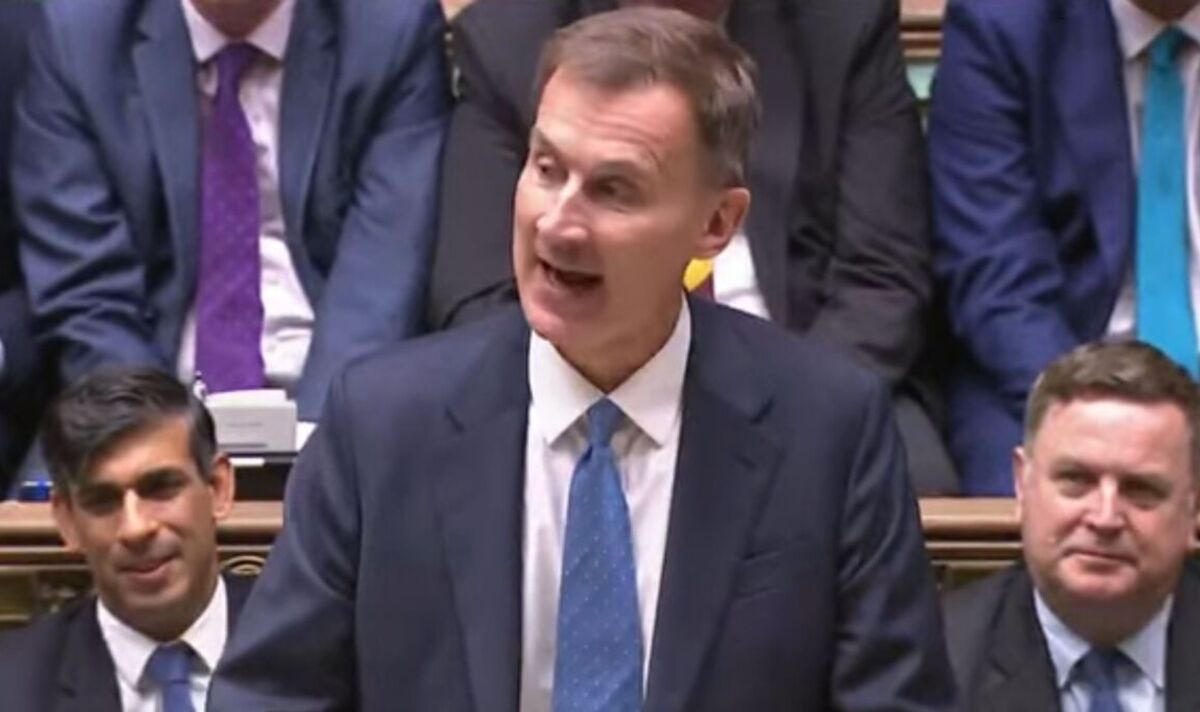
Chancellor Jeremy Hunt announced back in his Spring Budget that the Capital Gains Tax (CGT) allowance will be reduced from £6,000 to £3,000 in April 2024.
And experts state there is “no surprise” Mr Hunt didn’t mention CGT changes in yesterday’s Autumn Statement as he “gives with one hand and takes with the other”.
Samuel Gee at Manning Gee Investments said: “What the Chancellor gives with one hand, he has already taken away in another.
“The Capital Gains Tax (CGT) allowances have taken a nosedive from a decent £12,300 before April 2023 to a measly £3,000 starting April 2024. And there’s no surprise that all was quiet on this in the Autumn Statement.”
Currently, CGT is payable on profits earned when people sell or gift certain items worth more than £6,000 such as antiques or art, or assets including second homes and shares held outside of an ISA or PEP.
Individuals in the basic income tax band pay 10 percent on their gains and 18 percent on gains realised with a residential property. Higher and additional rate taxpayers pay 20 percent on gains and 28 percent on residential property.
Experts warn this means higher tax bills for investors and people who run their own businesses and pay themselves in dividends.
Mr Gee continued: “While CGT has often been considered a tax on the rich, it is not difficult for everyday investors with modest portfolios to be caught, possibly quite unexpectedly in the CGT trap.
“From a small landlord needing to sell a property that has supplemented their income, to a non-ISA investor with a modest portfolio as low as £60,000, CGT can now sneak up unexpectedly, increasing tax receipts for the government and creating a costly headache for those who never expected CGT to apply to them.
“This isn’t too surprising when the allowance will have been reduced by over 75% by April 2024. There’s just time to make sure you are invested as effectively as possible before the last hit takes place.
“Holding your investments in the right tax-wrappers can make a significant difference to the CGT position so while there’s still time, investors should consider how best they can mitigate any unexpected bills – as HMRC will know if it’s due!”
For the tax year 2023-24, the annual exemption amount was reduced from £12,300 to £6,000 for individuals and personal representatives, and from £6,150 to £3,000 for most trustees.
HMRC found that reducing the annual exemption by £6,000 saw an additional 235,000 people report their capital gains.
A higher rate taxpayer who enjoys gains of £22,300 in the next tax year would have to pay £1,260 extra tax compared to this tax year.
This would be compounded by a potential further £600 liability in the following tax year.
If the gain relates to the disposal of residential property (taxed at 18 percent or 28 per cent), the liability to CGT will be higher still.
By the 2024/25 tax year, the Government estimates that an additional 260,000 individuals and Trusts may be liable for CGT, which otherwise would not have, been had these changes not been implemented.
Sarah Coles, head of personal finance, Hargreaves Lansdown said: “The capital gains tax and dividend tax thresholds dropped in April, and are set to fall again next April, meaning higher tax bills for investors and people who run their own business and pay themselves in dividends.
“Given the government’s growth agenda, and drive to encourage investment into UK companies, halting the planned threshold cuts could help promote this agenda, and ease pressure on investors.”
Jason Hollands, Managing Director of Evelyn Partners continued: “If the focus is now on encouraging growth and investment, pressing ahead with such a measure [halving the allowance] sends the wrong message.”







